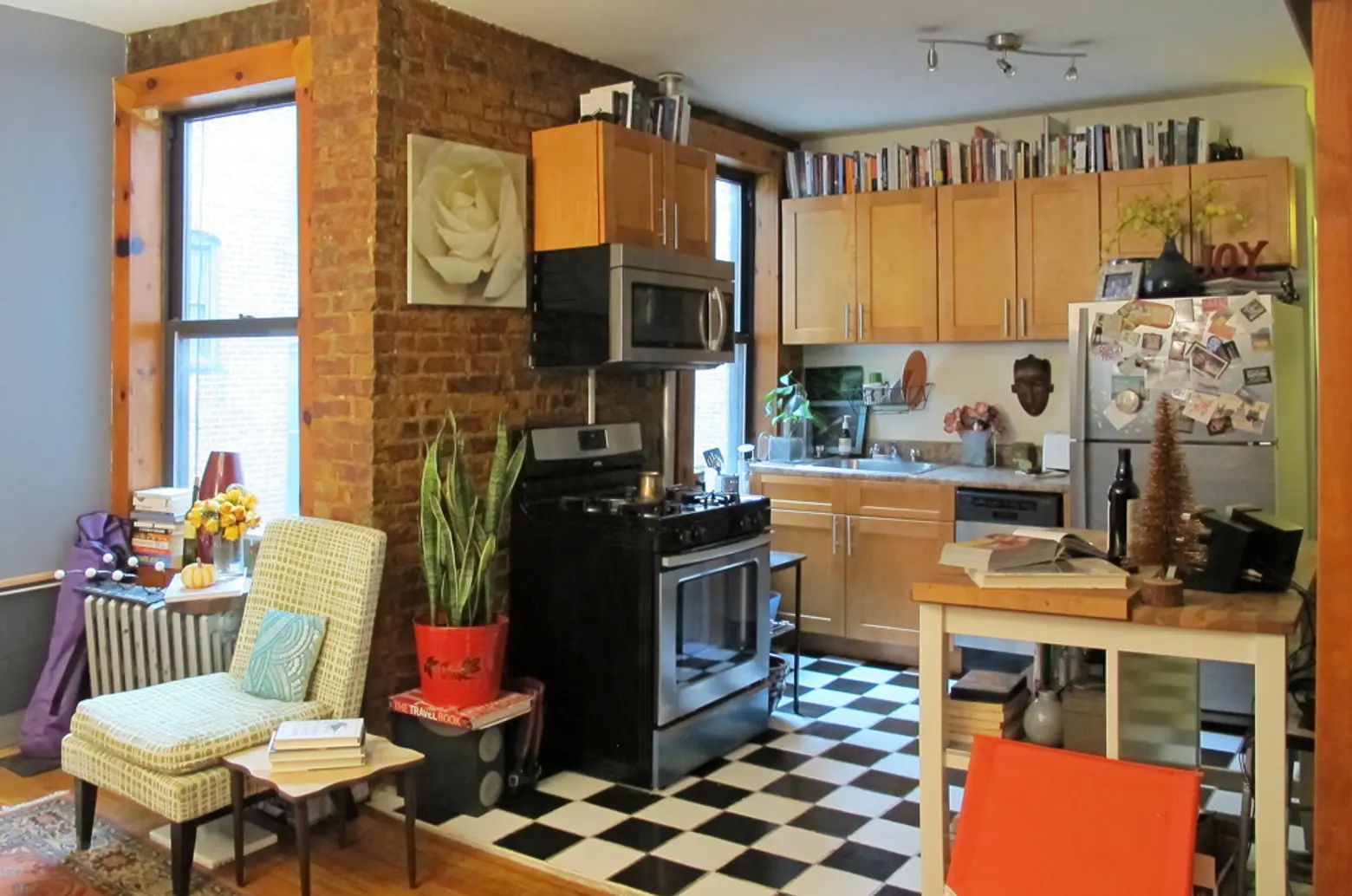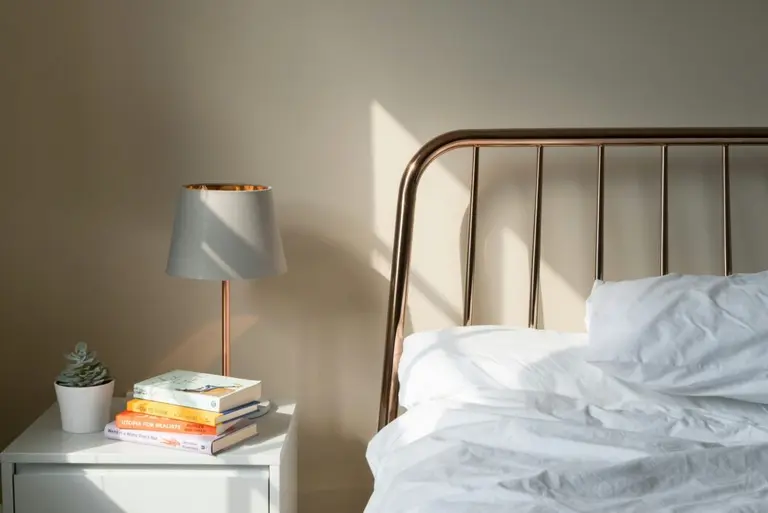Tips and storage ideas for couples living in small apartments
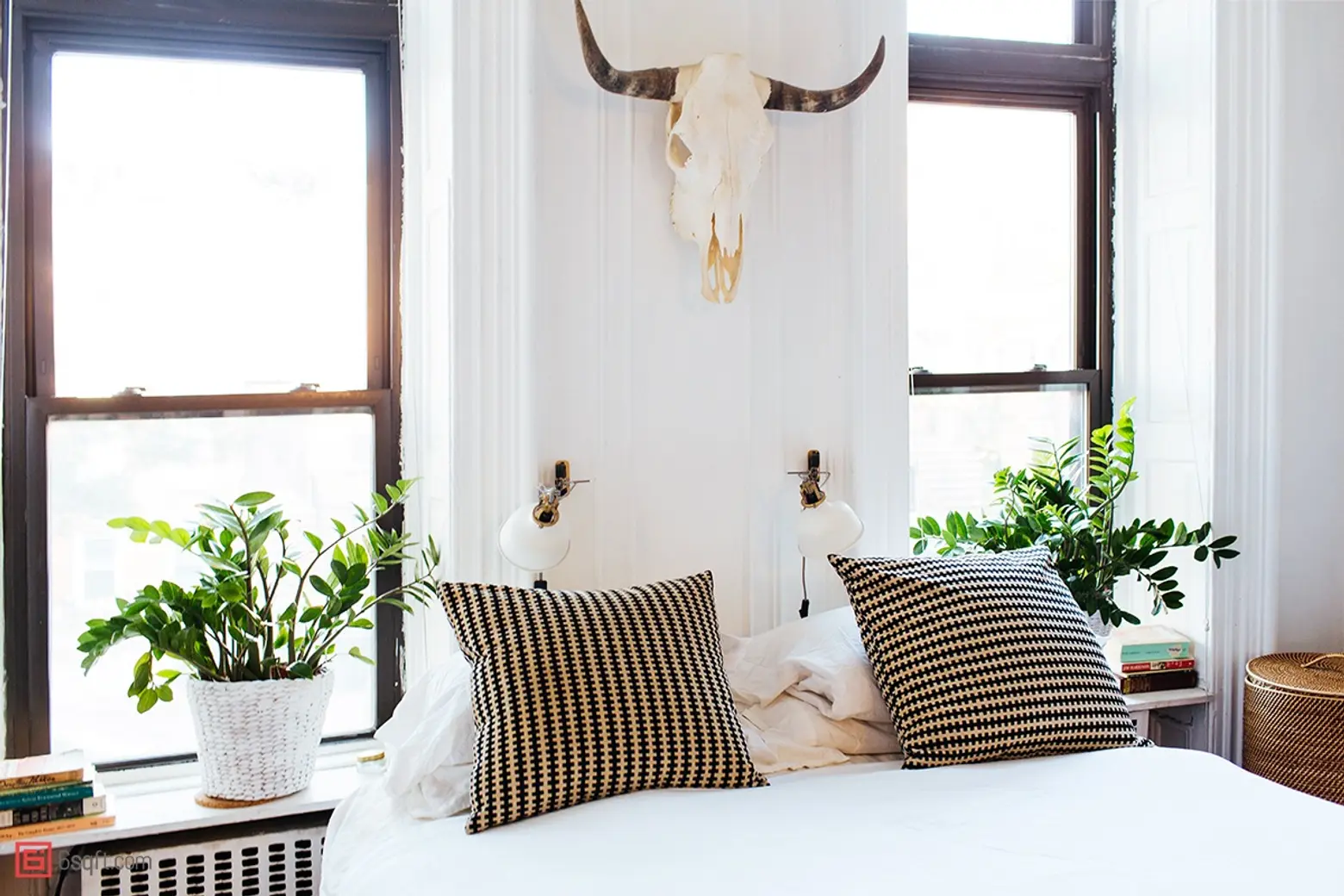
6sqft’s series Apartment Living 101 is aimed at helping New Yorkers navigate the challenges of creating a happy home in the big city. This week we offer up some tips for couples living together in a tiny pad.
When New York City couples move in together, it often means searching for, or being absorbed into, a modest one-bedroom apartment. For many, taking this plunge will be both exciting (think of all that saved rent!) and excruciating, as sharing a space will mean compromises, fights over housework, and the paring down of personal items so everyone’s stuff can fit.
So for those about to take the plunge—and those who could benefit from a bit more squabble-proofing at home—we’ve culled a list of our favorite self-preservation and storage tips for shacking up in small apartments.
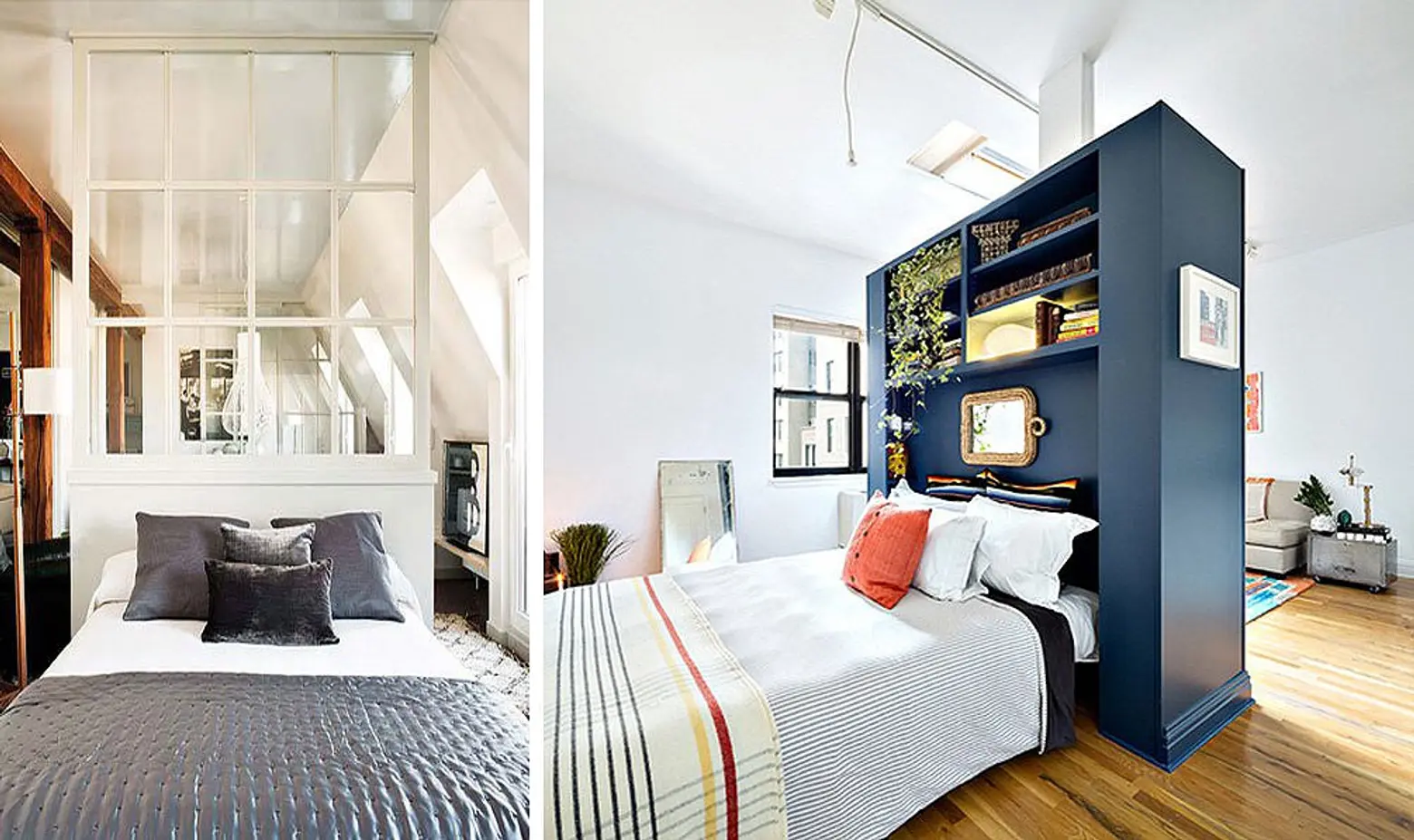 Using windows as a divider (L); A Brooklyn Heights studio that uses a large shelving unit to divide the space. Image courtesy of Donna Dotan Photography and Jason Saft. (R)
Using windows as a divider (L); A Brooklyn Heights studio that uses a large shelving unit to divide the space. Image courtesy of Donna Dotan Photography and Jason Saft. (R)
For self-preservation…
1. Use visual dividers to create “rooms” ↑
Dividers are a great way to fake extra space for an office or reading nook, or to create a private escape in a shared space. As Kate Stone, an artist living in a 400-square-foot Bushwick apartment with her husband, tells 6sqft, “Part of our studio is our ‘office.’ We have a ‘living room,’ ‘dining room,’ etc., even though they’re all the same space. It’s good to designate specific areas for specific functions.”
The conveniently cubic Kallax shelves are a common go-to for many folks thanks to the added bonus of extra storage space, but wood crates can provide the same effect for much less. Using shelving for dividers also gives partners more opportunity to express their individuality in a space. Foldable partitions, on the other hand, are easy to stow when guests are over.
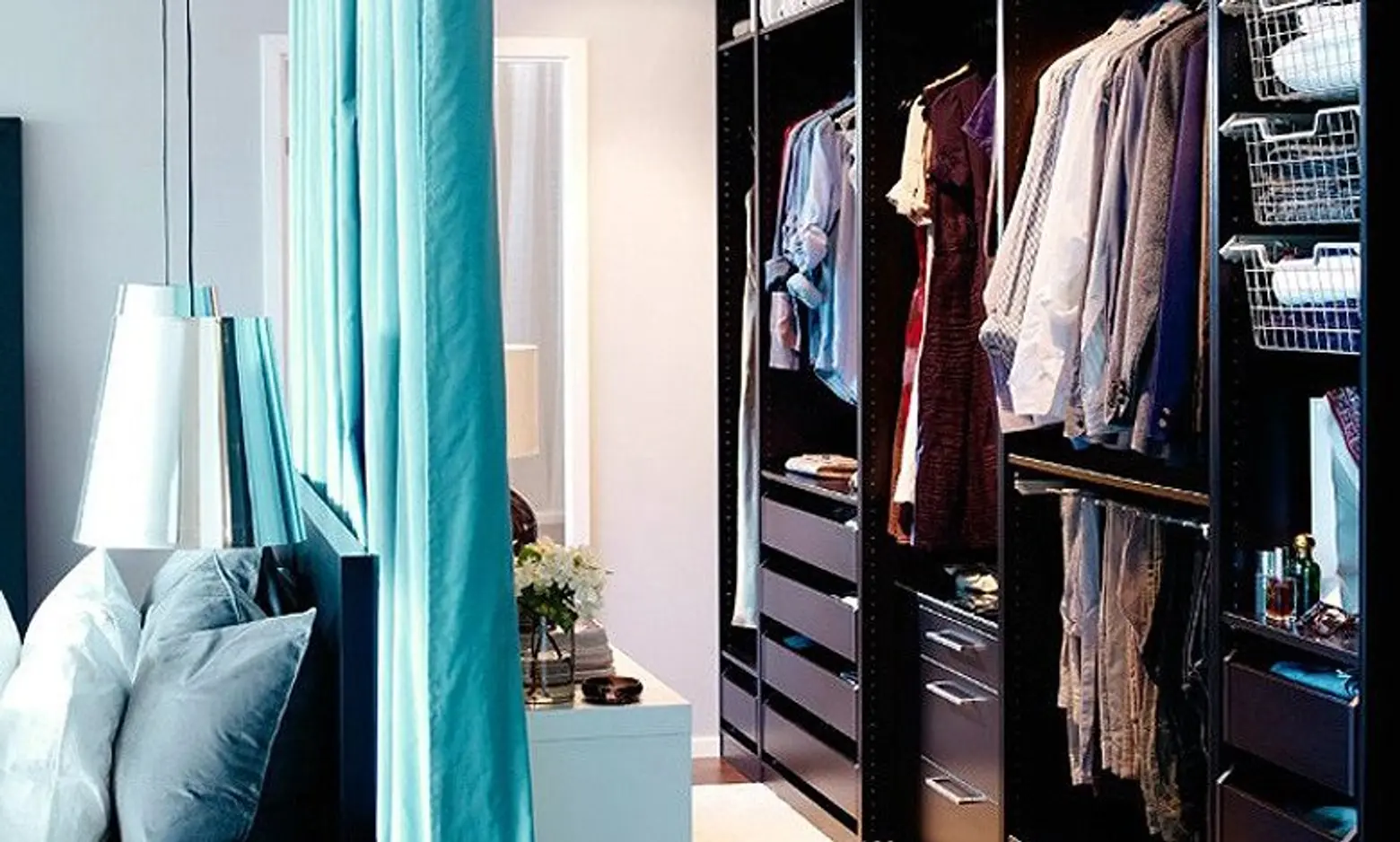 How to make a DIY closet via IKEA
How to make a DIY closet via IKEA
2. Keep separate closets ↑
“Separate closets are a must,” says Yuka Yoneda, an NYC editor living in a two-bedroom LIC apartment with her husband and a newborn, “even if one person has to use the front entrance wardrobe as their own. It’s the best way to eliminate quarrels caused by one person trying to unwedge a pair of their pants out from between the other’s polo shirts.”
If closets are limited, consider using room partitions or hanging curtains around a garment rack or wardrobe to create a makeshift walk-in closet. (Bonus tip: Slim or muti-tier hangers will also help maximize available space.)
3. Think beyond the walls of your apartment
If you have the opportunity to start anew together, search for an apartment building with common space, or seek out a neighborhood that’s well served by cafes or other spots that can be used year round. Inclement weather and unexpected fallouts will make a small apartment feel even more strained and claustrophobic.
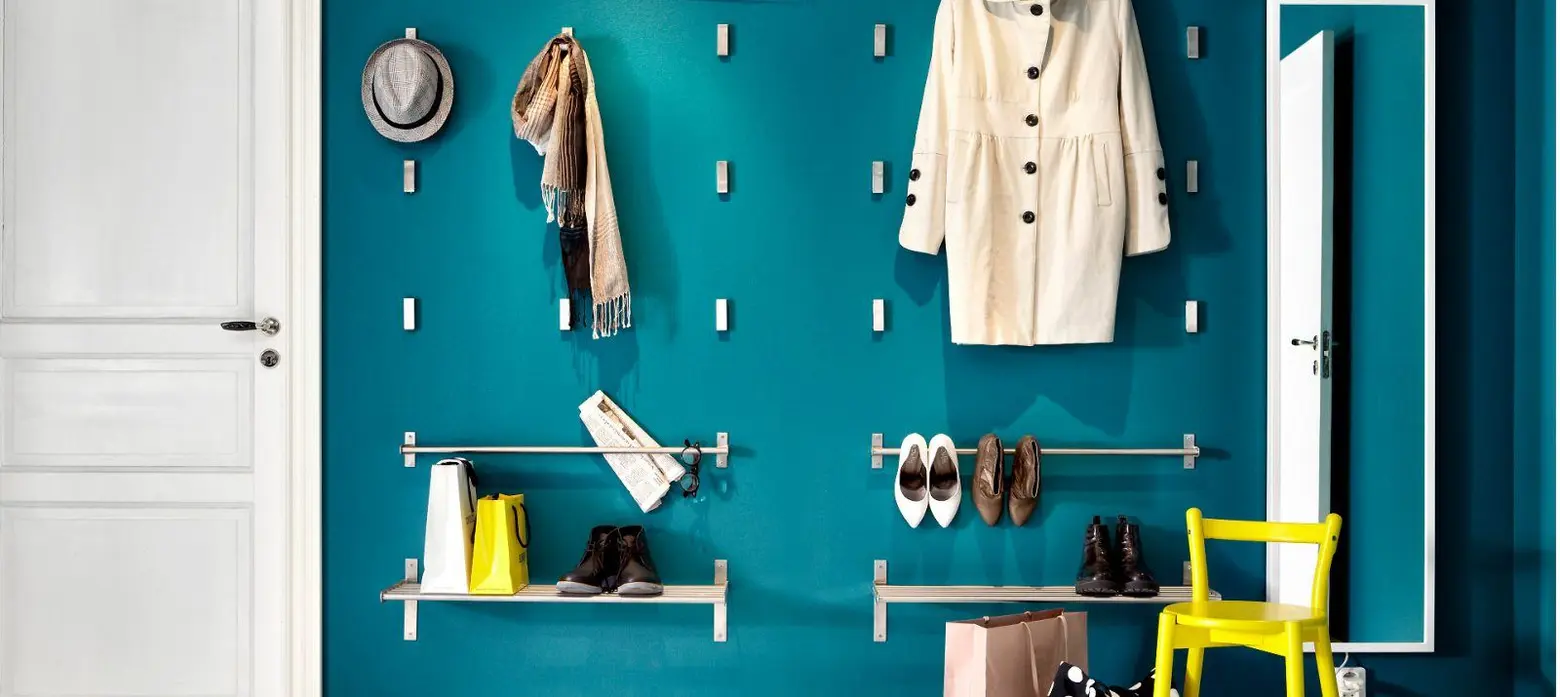 Image via IKEA
Image via IKEA
To maximize storage…
4. Use Hooks ↑
If closet space is scarce, add hooks to the interior of closet doors or on the sides of dressers where you can fit them. If you’ve got great stuff you can show off, hang your belongings gallery wall-style using strategically placed hooks.
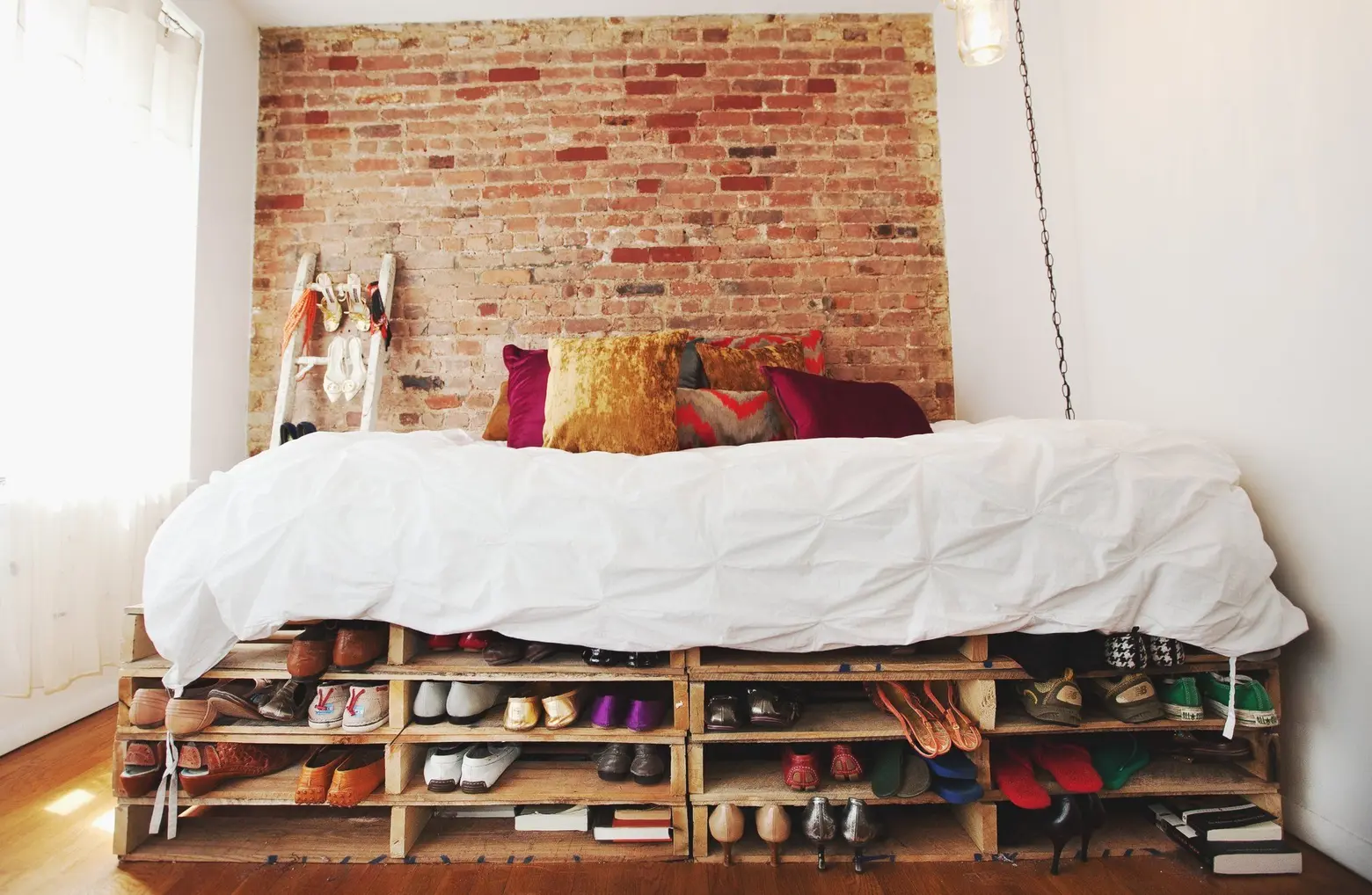 Image via PopSugar
Image via PopSugar
5. Store items under the bed or in the headboard ↑
Find or build a bed that allows you to store things beneath. We love this DIY alternative above that stacks wood pallets and uses the slats in between to store shoes and books. IKEA also sells this great headboard with adjustable, built-in shelves for just $130 if you want to maximize storage further.
6. Consider above head storage ↑
Look up for storage solutions. Space above cabinets can easily be used to stow books, pots, pans, or anything you don’t use regularly. The area above your bathroom door is also an oft forgotten space where additional shelving can be installed to discretely store cleaning supplies, toilet paper, towels and the like.
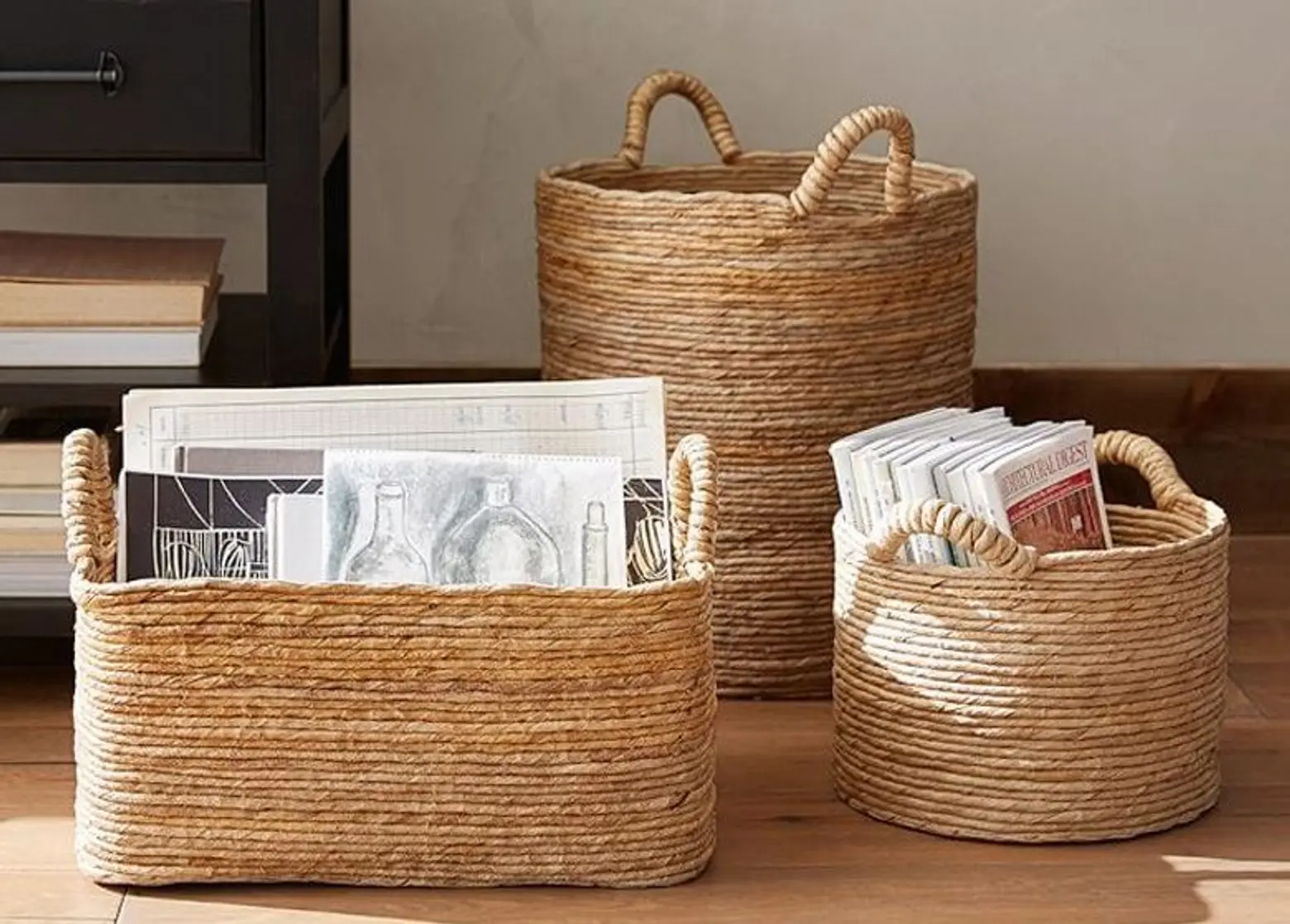 Storage baskets via Pottery Barn
Storage baskets via Pottery Barn
7. Use baskets ↑
Baskets are a surprisingly chic, affordable and simple way to hide items around the house. Opt to store things you need quick access to, small items or even clutter. Baskets with lids will help make sure you don’t go overboard making a mess.
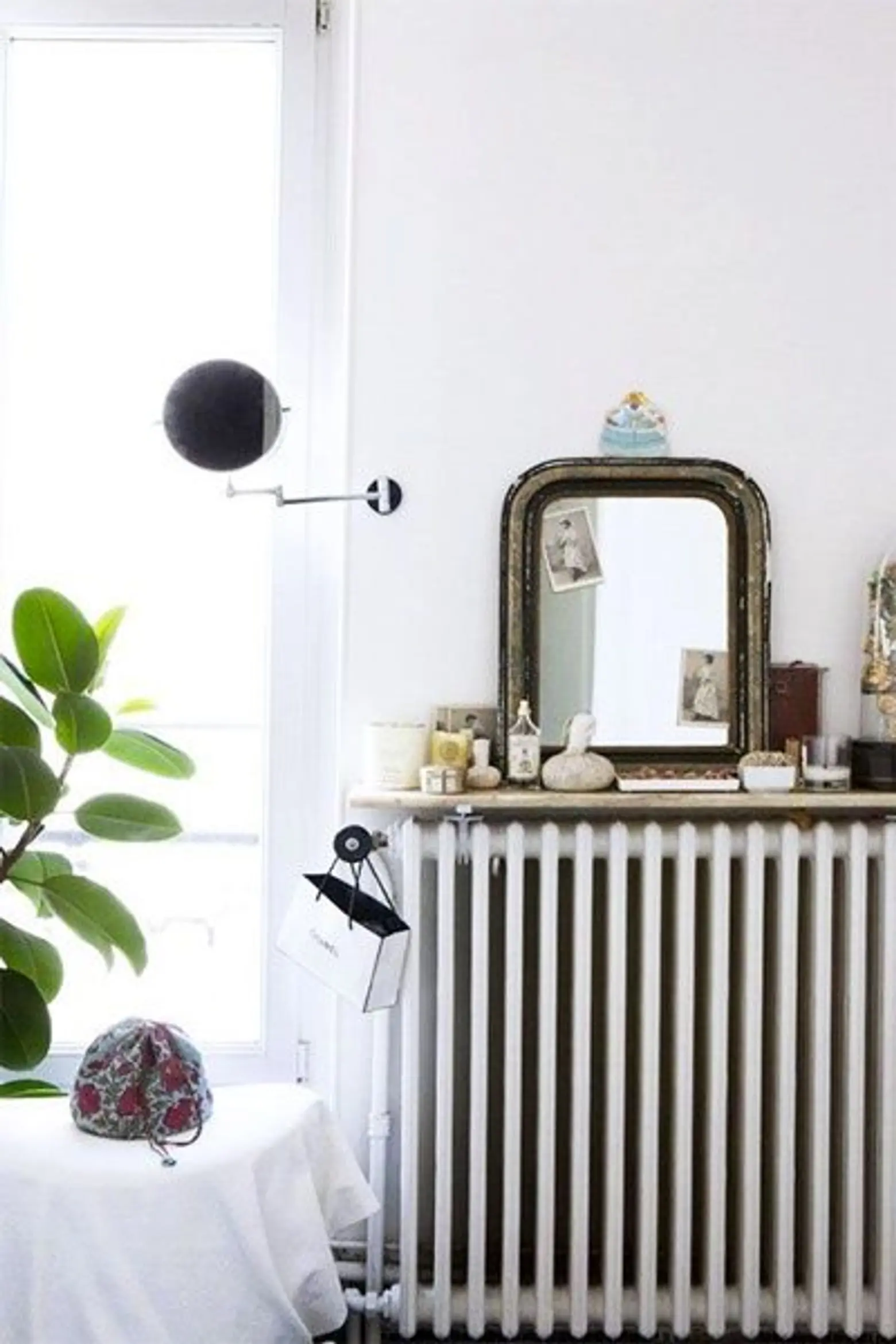 Image via Shelterness
Image via Shelterness
8. Create a radiator shelf ↑
Whether or not they’re pumping out heat, you can use the space above your radiators as shelves—a top tip in the bathroom where couples often quarrel over limited space. Simply measure the area above the radiator and have your local hardware store cut a sheet of wood to suit. Use the thickest wood you can to avoid warping, or if you can get your hands on it, use a piece of marble for a more upscale look. Avoid particle board or anything with a cheap veneer finish, as it will peel.
Learn to live with what you’ve got…
9. Purge your home 1-2 times a year
If you are hoarders, you’ll need to learn to let go and live with less, and the wardrobe is a great place to start. Most of us only wear a fraction of what’s in our closets, so do some good by donating or selling what you don’t need. If you need help paring down, here are a few great questions to ask yourself from The Every Girl:
- Does this fit?
- Have I worn this in the last 12 months?
- Is it likely I will ever wear this again?
- Is this currently in style, and/or does this still accurately represent my style?
- If this is damaged in any way (e.g., piling, rips, stains, missing buttons, broken zippers, fading, etc.), will I actually make the effort to get this repaired in the near future?
- If I was shopping right now, would I buy this?
- Do I feel confident when I wear this?
If you answered “no” to any of those, you should get rid of the item.
A similar evaluation should be applied to beauty products, tools, magazines… and all those hobbies that never quite panned out. If you don’t see yourself using something, then away it goes. Any redundant items owned by you and your partner should also be donated or sold—e.g. two blenders are not necessary.
“Living in a small space is all about editing,” advises Dustin O’Neal, a creative director with his own teensy 275-square-foot apartment. “You have to remove to grow.”
RELATED:
